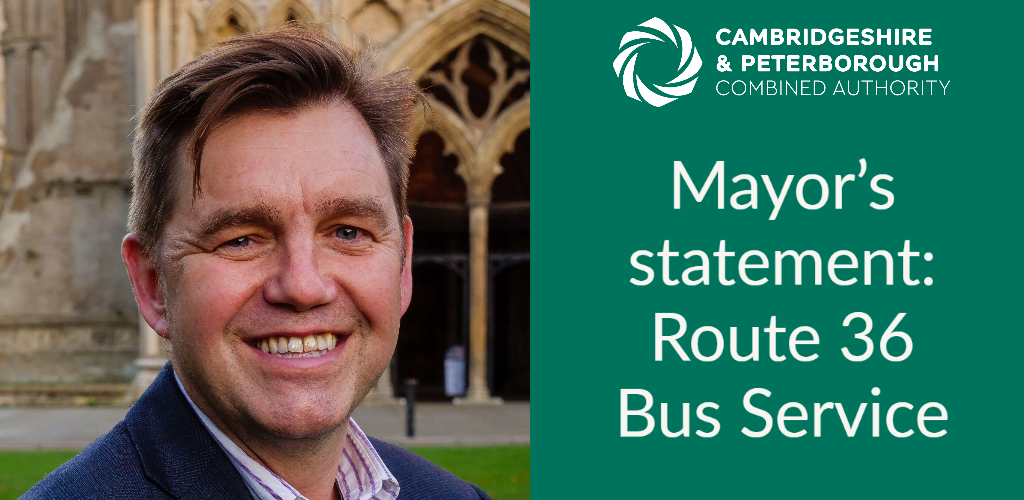St Ives travel preferences revealed as transport panel approves next steps for unified A141 improvement scheme

t its first meeting of 2022, the Transport and Infrastructure Committee of the Combined Authority heard how bypass and active travel options for St Ives got the thumbs-up from the public.
At the meeting, members agreed to make recommendations to the Board that will move the Huntingdon A141 and St Ives roads network project forward in one unified scheme for the development of both.
Members noted progress to date including:
- St Ives Study progress
- A141 and St Ives Option Appraisal Report
- Strategic Outline Business Case
The Committee agreed to recommend that the full Board approve the development and costing up of the next stage – Outline Business Case (OBC) and Preliminary Design.
They also agreed to recommend that the Combined Authority Board approves the programme and budgeting for the Local Improvement schemes for St Ives.
If agreed by the Board, the next stage of work is for the Combined Authority transport team to develop the scope, programme and cost of the OBC and preliminary design with Cambridge County Council. Once done, the proposal to fund development of the OBC and preliminary design will be brought back to the Committee and Board for consideration.
Public and stakeholder engagement for the St Ives roads network was undertaken between 14th June and 5th July 2021. The engagement focused on current thoughts / opinions of the St Ives transport network as well as the initial options. In total, there were 469 responses to the survey.
Results of Public Engagement Survey
51% of the respondents declared an interest in the area as a ‘resident of St Ives, Houghton, Needingworth, etc’. Additionally, ‘leisure walker’ (24%), ‘other’ (7%) and ‘commuter by car’ (7%), and ‘leisure cyclist’ (5%) were the next most common responses. The majority of respondents (44%) indicated that they made trips within their local area by car/van (as the driver) and walking (36%). The next most popular mode was bicycle or e-bicycle (15%) with other modes capturing 2% or less.
Respondents were asked to rank five transport issues they are most concerned about in St Ives. The majority of respondents ‘strongly agreed’ or ‘agreed’ with the issues presented, with fewer respondents ‘disagreeing’ or ‘strongly disagreeing’. The most common issues that respondents were the most concerned about were congestion (339), heavy traffic (269), and road safety (241). Fewer respondents, but still a significant number, agreed with improve air quality and improved journey times being concerning issues, (233) air quality and (193) journey times.
In terms of what matters to the respondents in terms of future developments of their local transport network, the most common response was ‘Very important’. Overall, when asked 90% of respondents strongly agreed or agreed with the need to reduce road traffic (cars, lorries, vans). Also, respondents agree that there is a need to improve ease of bus and coach use. Regarding, whether respondents would agree that there is a need to improve ease of minibus, taxi, minicab use, the results were skewed more towards ‘disagree’ (238) and ‘strongly disagree’ (123). Overall, most respondents were in agreement in the need to reduce road traffic. Respondents also agreed about re-allocating road space to walking and cycling infrastructure.
Fewer respondents felt that there was a need to reallocate road space to public transport
The proposed options for the study area included:
- Option 1: Full offline bypass with no connections from A141 to A1123;
- Option 2: Full offline bypass with connections to Marley Road;
- Option 3: Offline bypass from A141 connecting to Marley Road. From the B1040, an offline link provided to connect to A1123;
- Option 4: Local Junction Improvement Package;
- Option 5: Sustainable Travel Package; and
- Option 6: Non-Motorised User Package.
Overall, respondents most favoured a bypass option with other sustainable / active travel options and Local Junction Improvements Packages. A combination of Option 1 and Option 4 being the most favourable.
Plan your Journey

